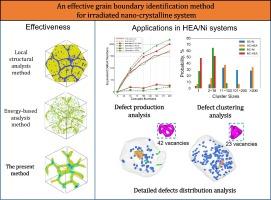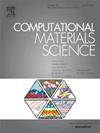In-depth study of the production and accumulation of defects during prolonged irradiation of nano-crystalline Ni and FeCoCrNi high-entropy alloy through MD simulation
Abstract
Because of remarkable irradiation resistance and mechanical properties, high entropy alloys (HEAs) are expected to be a candidate structural material in the next-generation nuclear power plants. Besides, the nano-crystalline (NC) materials also exhibit excellent radiation tolerance and good thermal stability. The NC-HEAs may have superior irradiation resistance than both NC and HEA materials. However, how the irradiation-resistant effects of HEAs and grain boundary (GB) jointly affect the irradiation damage evolution in NC HEAs is an interesting but rarely reported topic. Considering these, the present work investigated the irradiation defect production and accumulation characteristics in NC-HEA FeCoCrNi and NC-Ni by cascade overlapping simulations. The evolution of irradiation clusters within NC grains was quantitatively analyzed for the first time using a newly developed method. The results show that the irradiation defects produced in NC-HEA are more diminutive and uniformly distributed than those in NC-Ni with a similar irradiation dose despite the total number of survived point defects being very close in the two cases. Further investigation shows that such a better irradiation resistance of NC-HEA can be attributed to the synergy between the severe lattice distortion effect in HEAs and the interstitial sink effect of GBs in NC. The present study may provide some fundamental understanding of the irradiation defect evolution mechanisms for the novel HEAs that potentially serve as structural materials in advanced reactors.


| 公司名称 | 产品信息 | 采购帮参考价格 |
|---|
 求助内容:
求助内容: 应助结果提醒方式:
应助结果提醒方式:


